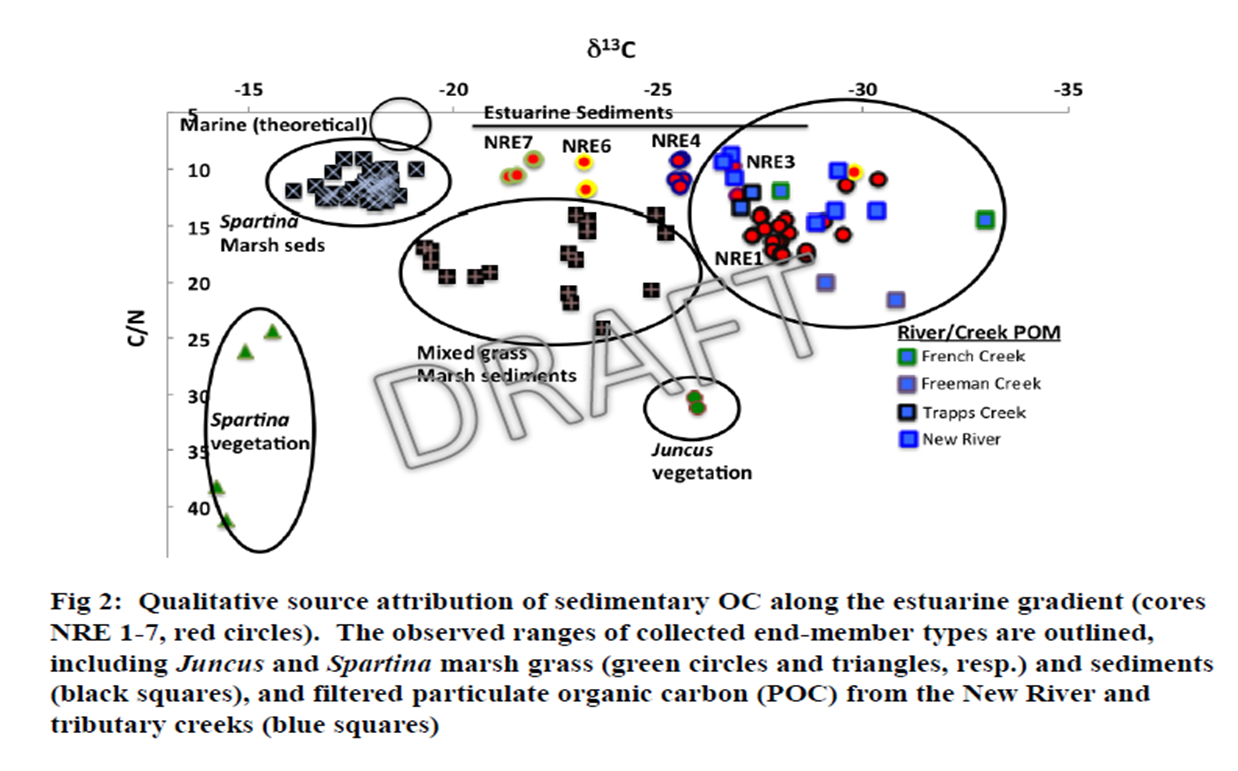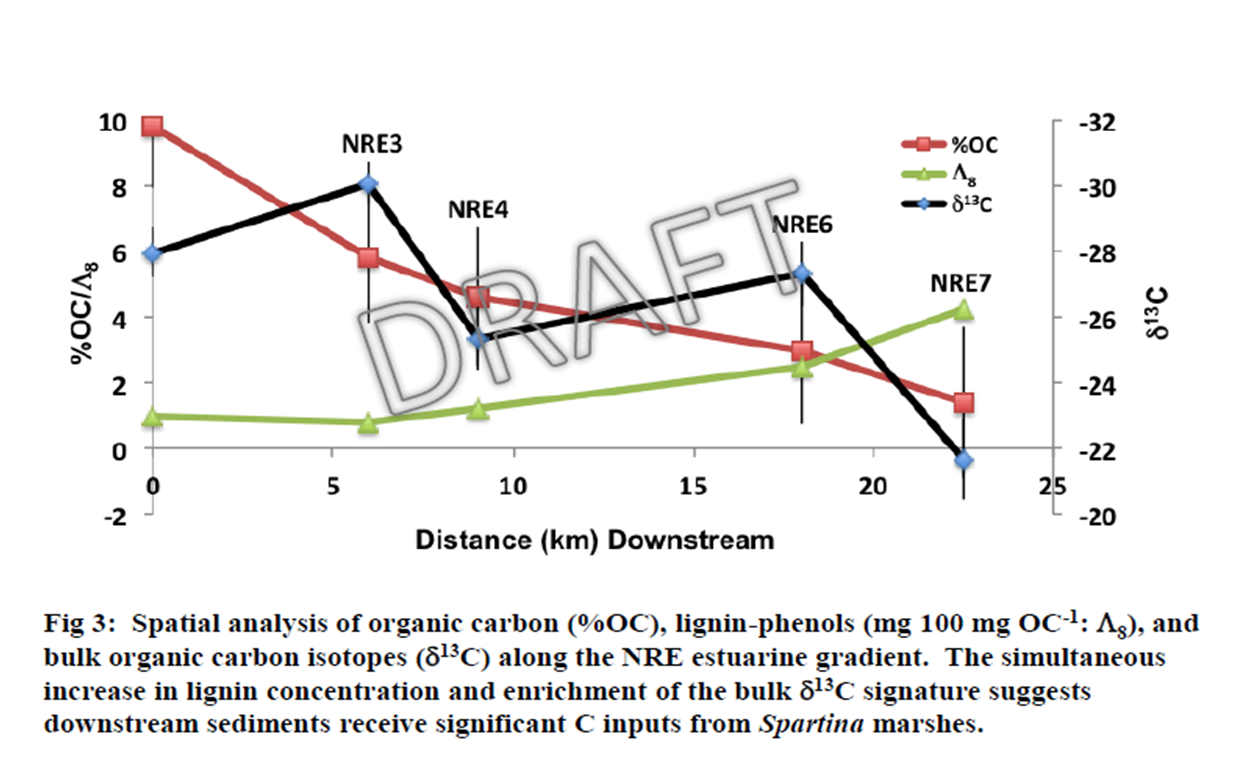Defense Coastal/Estuarine Research Program (DCERP2)
Most current assessments of carbon cycling in the coastal landscape are typically conducted piecemeal and are habitat specific. For example, atmospheric CO2 fluxes or carbon burial rates might be measured in an intertidal marsh or estuary, but are quantified in the absence of measuring carbon exchanges between these habitats. This type of existing approach in which carbon cycling estimates are uncoupled from cross-habitat transport, or source determination, precludes full understanding of the source-sink nature of the habitat. This approach specifically confines interpretation to static mass balances and provides limited mechanistic understanding of underlying processes that are likely to drive altered patterns of carbon cycling in the future. Results from DCERP1, however, delineated the biogeochemical connections between coastal habitats within MCBCL and their sensitivity to physical drivers such as seasonal and pulsed delivery of freshwater and nutrients. This previous work also characterized the influence of tidal forcings on marsh-estuary exchanges, identified the effects of storm-driven overwash of the backbarrier marsh, and defined the linkages between land-use and watershed loadings. The system-scale knowledge acquired during DCERP1 helped shape the structure of how carbon cycling is approached in DCERP2. The DCERP2 approach equally weights intra-habitat mass balancing with inter-habitat exchanges to yield an integrated picture at the landscape scale. This “big picture” approach uniquely allows assessment of carbon (re)distribution at expanded spatial and temporal scales. In support of this effort the Tobias lab is :1) using select biomarker distribution and compound specific isotope analyses (CSIA) to characterize carbon reservoirs in estuarine and marsh sediments in the New River Estuary, NC; 2) apply oxygen 18 isotope techniques to partition estuarine respiration into benthic vs. water column contributions; and 3) quantify the advective fluxes of dissolved carbon between marshes and adjacent open waters.

